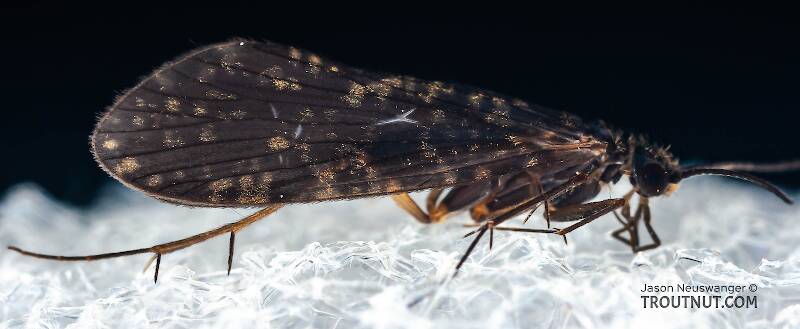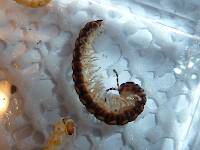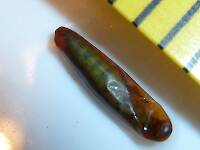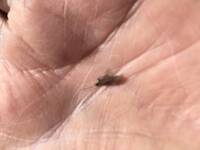
Blue-winged Olives
Baetis
Tiny Baetis mayflies are perhaps the most commonly encountered and imitated by anglers on all American trout streams due to their great abundance, widespread distribution, and trout-friendly emergence habits.
Featured on the forum

Nymphs of this species were fairly common in late-winter kick net samples from the upper Yakima River. Although I could not find a key to species of Zapada nymphs, a revision of the Nemouridae family by Baumann (1975) includes the following helpful sentence: "2 cervical gills on each side of midline, 1 arising inside and 1 outside of lateral cervical sclerites, usually single and elongate, sometimes constricted but with 3 or 4 branches arising beyond gill base in Zapada cinctipes." This specimen clearly has the branches and is within the range of that species.

Troutnut is a project started in 2003 by salmonid ecologist Jason "Troutnut" Neuswanger to help anglers and
fly tyers unabashedly embrace the entomological side of the sport. Learn more about Troutnut or
support the project for an enhanced experience here.

This caddis species was dancing high over the stream, spaced a foot or two apart across most of its width, very much like Ephemera mayfly spinners but with more side-to-side motion mixed in. There were more than enough to get the trout interested, but I wasn't able to stick around until they fell on the water (if they did at all).
Litobrancha on Jun 12, 2007June 12th, 2007, 8:04 am EDT
This is a male dolophilodes, probably distinctus.
You can distinguish philopotamids from hydropsychids by the ocellar head warts that are absent in hydropsychids.
D. distinctus is everywhere, along with Oecetis inconspicua, including perhaps the moon, inner four planets and in orbit. it is a beautiful insect however.
You can distinguish philopotamids from hydropsychids by the ocellar head warts that are absent in hydropsychids.
D. distinctus is everywhere, along with Oecetis inconspicua, including perhaps the moon, inner four planets and in orbit. it is a beautiful insect however.
Troutnut on Jun 12, 2007June 12th, 2007, 2:35 pm EDT
Neat, thanks for the ID and tip on how to tell the difference.
Jason Neuswanger, Ph.D.
Troutnut and salmonid ecologist
Troutnut and salmonid ecologist
Quick Reply
Related Discussions
Topic
Replies
Last Reply
12
Jun 13, 2007
by Litobrancha
by Litobrancha
14
Jul 24, 2014
by Crepuscular
by Crepuscular
32
Jul 17, 2007
by Shawnny3
by Shawnny3
9
Mar 18, 2013
by Entoman
by Entoman





